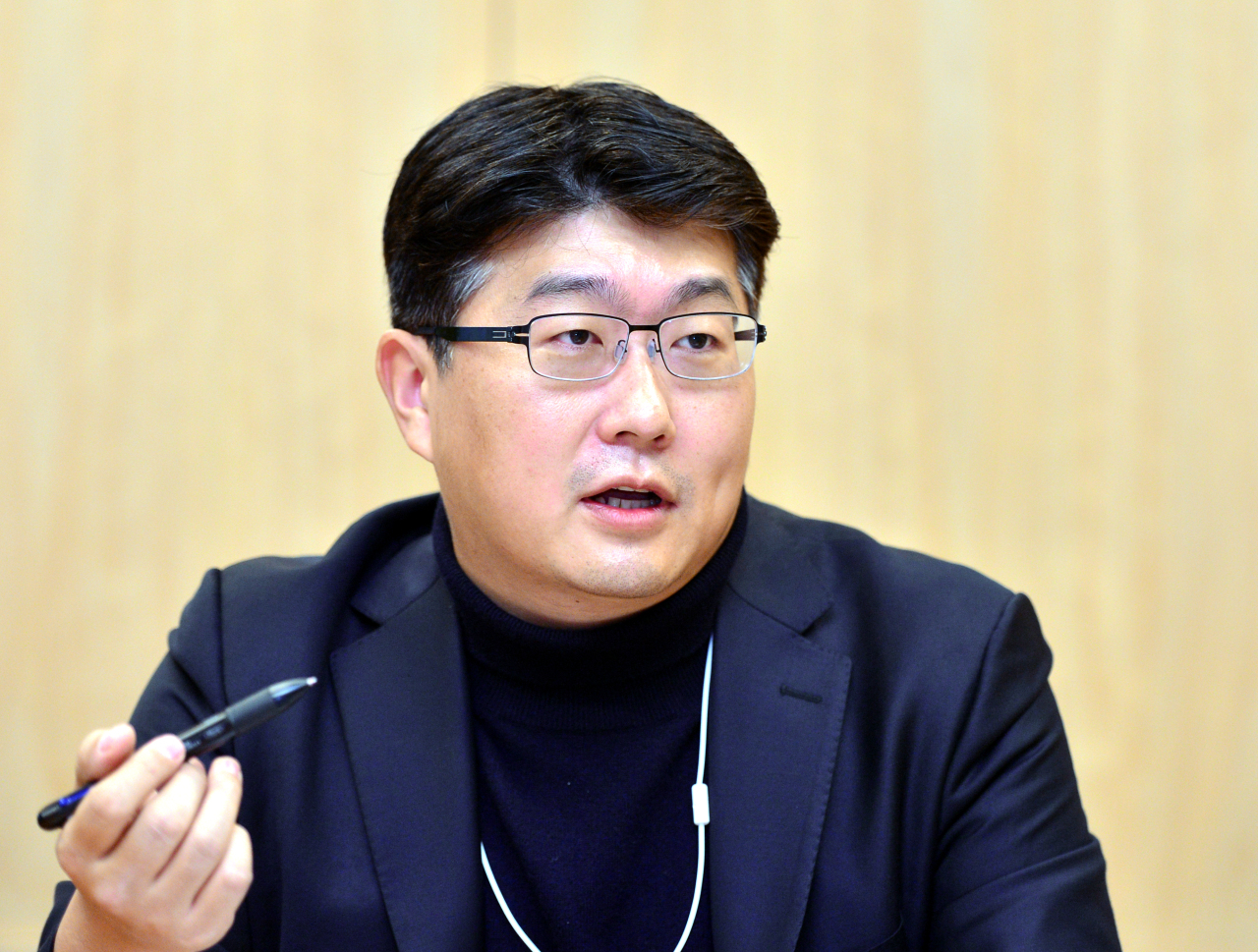[CES 2022] At CES, SK to pledge to cut 1% of Earth’s carbon emissions
With hydrogen, SK aims to ‘buy time’ for green innovations to mature
By Kim Byung-wookPublished : Dec. 29, 2021 - 15:53

SK Group, the third-largest conglomerate in South Korea, albeit lesser known on the global stage than Samsung, plans to surprise the world with its grand plan to reduce 1 percent of the world’s carbon emissions at the Consumer Electronics Show 2022.
Bringing a rather public agenda at the world’s largest tech event where technological innovations take center stage, SK will share its hydrogen strategy to promote global transition into a carbon-neutral world, according to Andrew Kwon, vice president and head of the strategy at SK Hydrogen Biz Development Center.
SK’s goal is to buy time for the innovations to catch up with the accelerating climate change by maximizing the use of hydrogen, he said in an interview with The Korea Herald last week. The center manages the conglomerate’s entire hydrogen business.
As the pace of global electrification is too slow, it needs a partner, and hydrogen could be the one, he said.
“Korea, for instance, plans to roll out 600,000 electric vehicles by 2030 to curb 40 million (metric) tons of carbon emissions. However, based on our calculations, putting 2.4 million EVs on the road will be just enough to reduce 20 million tons, which is half the target,” said Kwon.
“There are several sectors that emit the most carbon -- industry, transportation, power generation, agriculture and so on. We can’t tell people to stop using steel, consume less electricity or don’t eat beef,” he said. “Changing heavy-duty trucks -- which are responsible for the 60 percent of total emissions in the transportation sector -- into hydrogen trucks is the easiest and the most realistic way to buy time until other sectors can find innovative methods to curb emissions on their own.”
According to Kwon, electric vehicles are suitable as passenger vehicles, but not cargo trucks, as the heavy weight of batteries shaves off driving range and space for payloads.
At CES 2022, five SK Group affiliates -- SK hynix, SK Innovation, SK Telecom, SK Ecoplant and SK E&S -- are expected to offer their carbon neutrality visions and send a message to some 180 vehicle-tech exhibitors that their electric vehicles, self-driving technologies, no matter how innovative they might be, at the end of the day, are just not enough to fundamentally tackle the most pending issue of climate change.
As Kwon suggested, changing fossil fuel-based trucks into hydrogen trucks would be one way to truly decarbonize the transportation sector and buy time for other sectors to come along, but he admits harsh market conditions lie ahead. Though SK Group aims to invest 18.5 trillion won ($15.5 billion) to produce, retail and sell hydrogen, the market isn’t ripe yet, he said.
A passenger hydrogen vehicle consumes just 200 kilograms of hydrogen per year. To roll out infrastructure, there has to be a more stable demand. Right now, (hydrogen business) is economically infeasible,” Kwon said.
Electric vehicle sales fare much better than hydrogen ones. From 2010 to November 2021, 226,708 EVs were sold in Korea, according to government data.
Hydrogen way
Kwon projects that the long-term demand should eventually come from the power generation sector, but the use of hydrogen is being blocked by the decadeslong hegemony of renewable energy dominated by solar and wind power.
“In Korea, there is this sentiment to put solar and wind power first and hydrogen later, but it’s important to keep a balanced energy portfolio,” Kwon said.
According to Kwon, SK Group is pushing for hydrogen because it understands the limits of renewable energy more than anyone else.
SK E&S, a natural gas and hydrogen unit of SK Group, operates renewable energy facilities worth 2.5 gigawatts, one of the biggest scales in Korea. The company aims to add 1 gigawatt every year, but it learned that solar and wind power are not the ultimate answer.
“Solar farms are operational only 3.5 hours a day. That’s when there are no shades. Also, if one solar cell on the panel is broken, two lines of solar cells connected to go offline,” Kwon said.
According to Kwon, one hydrogen fuel cell power plant, which is operational 24/7, can generate the same amount of electricity as eight solar farms. Simply put, a 1-gigawatt hydrogen fuel cell power plant, which only requires land about the size of 15-20 football fields, is equivalent to eight 1-gigawatt solar farms, which would together take up land as big as 10,900 football fields.
“In the case of wind power, a project takes at least seven-eight years, even 10 years from review to completion. To meet the Korean government’s goal to reduce carbon emissions 40 percent to 436.6 million tons by 2030 from 727.6 million tons in 2018, wind farms must be built starting right now, which isn’t the case,” explained Kwon.
Considering the apparent advantage and necessity of hydrogen, it's imperative to adopt hydrogen along with solar and wind power as clean energy sources, Kwon suggests. Last month, a bill to mandate big power companies in Korea to generate a certain percentage of electricity with hydrogen was blocked by lawmakers.
“Economic values and social values can no longer be separate. Global environmental regulations such as carbon tariffs can potentially take out industries such as the steel and petrochemical industries where carbon reduction is difficult. With hydrogen, SK Group aims to buy time for those industries, because if they fall, we all fall,” Kwon said.











![[Today’s K-pop] BTS pop-up event to come to Seoul](http://res.heraldm.com/phpwas/restmb_idxmake.php?idx=644&simg=/content/image/2024/04/17/20240417050734_0.jpg&u=)




![[KH Explains] Hyundai's full hybrid edge to pay off amid slow transition to pure EVs](http://res.heraldm.com/phpwas/restmb_idxmake.php?idx=652&simg=/content/image/2024/04/18/20240418050645_0.jpg&u=20240419100350)

![[Today’s K-pop] Zico drops snippet of collaboration with Jennie](http://res.heraldm.com/phpwas/restmb_idxmake.php?idx=642&simg=/content/image/2024/04/18/20240418050702_0.jpg&u=)